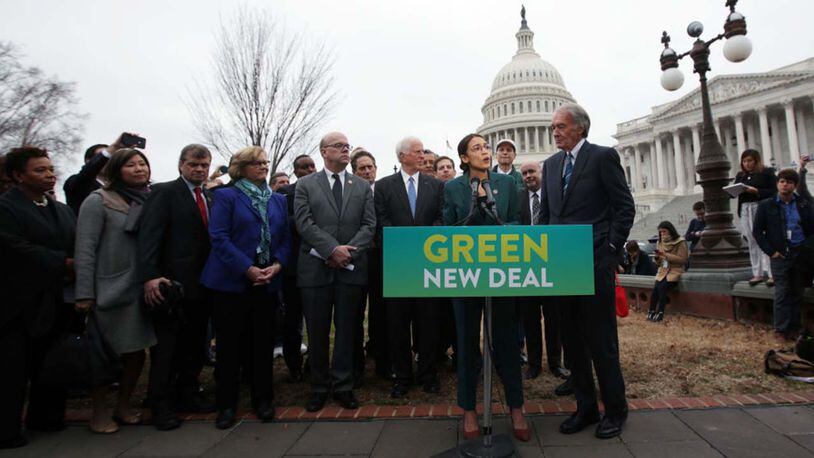First a little history on the Green New Deal or GND. It’s really not a “new deal” in the sense that the phrase was first coined by journalist Thomas Friedman in the early 2000s when he argued that “we will only green the world when we change the very nature of the electricity grid – moving it away from dirty coal or oil to clean coal and renewables.”
The Green New Deal Group took up the approach in 2008 followed by the United Nations Environmental Program. The Green Party grabbed the mantle during Jill Stein's presidential run in 2012 and 2016.
The current face of the GND involves progressives like Ocasio-Cortez and Markey and the Sunrise Movement, but it’s still only a nonbinding resolution in Congress.
Here are seven things to know about the Green New Deal.
1- The Green New Deal borrows its strategy from Franklin D. Roosevelt's New Deal, a series of reforms and new infrastructure projects during the Great Depression to get Americans working again.
2- The plan encompasses a number of ambitious goals, leading among them to achieve net-zero greenhouse gas emissions, according to some reporting, by 2030 and other estimates by 2050.
3- The GND also attempts to address social issues, such as income disparity, poverty and racial discrimination, according to the Sunrise Movement.
4- The resolution was spurred by two serious studies last year from scientists and the United Nations warning that the world must decrease greenhouse gas emissions and carbon monoxide at a more accelerated rate than previously thought to avoid a global temperature increase of 2.7 degrees Fahrenheit by 2030.
If that happens, the world could see a mass die-off of coral reefs, worsening water and food shortages and increased wildfires and droughts.
5- House Speaker Nancy Pelosi called the climate plan "a green dream." In a speech at Howard University in February, Pelosi would not commit to holding a vote on the non-binding resolution, according to Roll Call.
“I can’t say we’re going to take that and pass it because we have to go through our checks and balances of it with our committee chairs and the rest,” the California Democrat said, according to Roll Call.
Pelosi doesn’t believe a non-binding resolution is the best way to address the climate crisis, but instead wants to see it addressed through “legislation, the law of the land.”
6- The GND doesn’t just address climate change, and plenty of critics see that as a bigger part of the problem in trying to achieve widespread support for the plan. It includes other policy changes initiatives such as health care for all and social reforms and is estimated to cost in the trillions of dollars.
While Senate Majority Leader Mitch McConnell has said he plans a vote on the resolution, according to The Hill, it could help Republicans paint Democrats as "extreme on energy policy."
About the Author
